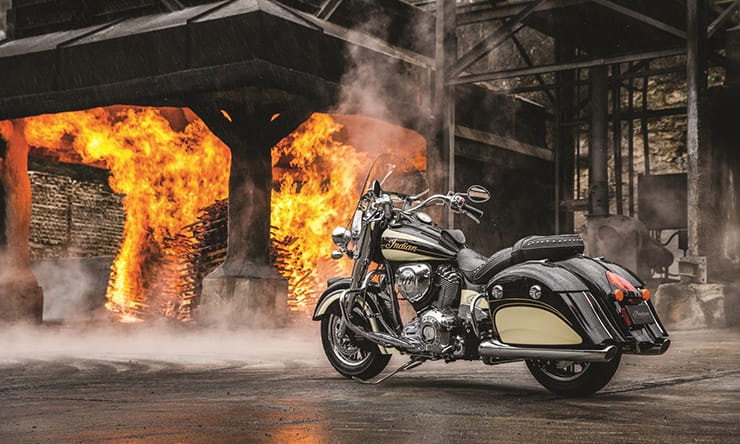Trump’s trade war hits motorcycles
By Ben Purvis
Motorcycle Journalist
11.06.2018
USA Import Tariffs
On 1st June the USA’s trade tariffs against imported steel and aluminium came into force against the EU and unless there’s a change of heart that means American bikes sold in Europe will be smacked with a 25% import duty within weeks.
The US tariffs – which add 25% duty to steel and 10% to aluminium imported from Europe and elsewhere – have been the subject of months of negotiations. But despite a last-minute reprieve in April, adding a further month to the talks, no deal has been reached before the revised 1st June deadline.
The European Union has already drawn up a 10 page list of US products that it plans to put retaliatory duties on. These range from sweetcorn to glass products, from yachts to tablecloths, but among them the EU has taken aim specifically at products that are synonymous with the USA. So bourbon will be taxed – hitting Jack Daniel’s – as will denim jeans, targeting Levi’s. And, of course, motorcycles over 500cc; a clear shot at Harley-Davidson, as a stand-out American brand. Indian will also be hit, of course, as well as any other American bike company selling machines over 500cc in Europe. Suddenly Indian’s range of limited-edition Jack Daniel’s tie-in models look like they’re the epitome of the EU’s trade targets.
In fact bikes get a mention not once but twice in the retaliation plan, which includes two stages. Motorcycles are in both.
The first stage, due to be implemented on 20th June, adds a 25% import tariff to motorcycles between 500cc and 800cc and to motorcycles over 800cc. But they also appear – marked with a further 25% tariff – on a second stage list that is due to be implemented on 23 March 2021, or sooner if the World Trade Organisation’s Dispute Settlement Body rules that the US measures are against WTO rules.
At the moment, motorcycles imported into the EU are subject to a mere 6% import duty, so even the first increase – to 25% - will make a huge impact on the cost of American bikes.
Not just motorcycles affected
Even if you’re not in the market for a new American bike, there’s a potential impact from the planned EU taxes. Various other goods involved with motorcycling will also be harmed.
For instance, the EU tariff plans specifically mention a punitive tax on motorcycle roller chains. A strange target, perhaps, but it’s there nonetheless. There are also extensive rules against clothing – the ones aimed at Levi’s – that may well end up catching out manufacturers of denim riding gear. Various types of footware are in the list, too, potentially including motorcycle boots, depending on the details of their construction. Even ‘rear-view mirrors for vehicles’ are specifically picked out for additional taxation, although it’s not clear whether that affects any mirrors used on bikes.
Business built on exports
From all this, the key takeaway is that unless a deal is reached Harley-Davidson and Indian will be hitting some big problems when it comes to selling their bikes in Europe.
It’s a big deal for both firms, but Harley in particular has already staked much of its future on a plan to expand its export sales. The EU is its largest export market.
In fact, the firm’s problems are doubled by the original US tariffs on steel and aluminium, which are sure to increase the costs of those materials in America. If your business is making motorcycles, you’re inevitably using a lot of both. So they’ll be facing increased production costs and a potentially huge hike in sale prices in Europe.
Are there solutions? Perhaps. Harley already has manufacturing and assembly facilities outside America, including Thailand, and perhaps by sourcing its European machines there rather than from its American plants it could sidestep some of the proposed duties. However, on the news that no deal had been reached between the US and EU, Harley’s stock prices began to drop.
There’s also a potential upside for existing owners of American-made machines; if the proposed EU taxes significantly increase the RRPs of new machines – as they’re surely intended to – then a knock-on effect may well be a rise in the value of used Indians and Harleys. It might not be a good time for investors in Harley-Davidson as a business, but perhaps those in Europe with their money in actual Harley-Davidsons will have something to smile about.
Share on social media:
